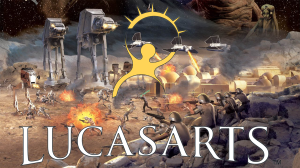Transformers suffered through an identity crisis after the classic 80s animated series began losing steam. The Transformers had yet to establish a specific look, with Hasbro not especially invested in how characters or terminology would be carried over from line to line. This allowed for a great deal of experimentation, including the involvement of Japanese studios in producing and animating their own series. This has led to a string of Japanese-exclusive Transformers anime, including Headmasters and Beast Wars II. However, one Transformers anime was able to make its way onto American airwaves at the turn of the century, serving as a prologue for the franchise’s 2000s branding. Transformers: Robots in Disguise returns the franchise to its roots, becoming one of the most forgotten yet underrated shows.
Videos by ComicBook.com
Transformers: Robots in Disguise exists in an awkward period. It aired on Fox Kids in 2001, directly after Beast Machines, the less successful sequel to Beast Wars. The show has no connections to any of the previous series and doesn’t have any direct sequels. Transformers: Armada quickly overshadowed it, becoming the more successful Transformers anime in the United States. However, Robots in Disguise still has its charm and deserves to be remembered for how it ultimately led to the franchise becoming a dominant brand again in the 2000s.
[RELATED – Transformers 40th Anniversary Beast Wars II Lio Convoy Is Up For Pre-Order]

History of Transformers and Japan
The Transformers initially began life as separate Japanese toy lines. Hasbro purchased the overseas rights for the Diaclone and Micro Change toy lines from Japan’s Takara Tomy, merging them into the Transformers. Many Diaclone toys were designed by Shōji Kawamori, creator of Macross. Hasbro even reused Kawamori’s design for the Valkyrie from Macross and turned it into the Transformer Jetfire because of some legal loopholes and company politics.
Transformers has always had one foot in Japan, so it makes sense for the country to produce so many anime adaptations. Toei Animation, the Japanese studio behind Dragon Ball and One Piece, assisted in producing and animating the classic Transformers animated series. When the show was canceled after airing its three-part “Rebirth” in Season 4, Toei decided to continue the franchise with Transformers: The Headmasters, which ignored “Rebirth” and continued the ongoing narrative of the Autobots and Decepticons. Headmasters were followed by Transformers: Super-God Masterforce in 1988, Transformers: Victory in 1989, and the OVA Transformers: Zone in 1990. After the success of Beast Wars in Japan, and to fill in more airtime, Beast Wars II and Beast Wars Neo were commissioned. Ashi Productions would produce and animate the Beast Wars spin-offs for Japan, introducing fan-favorite characters like Lio Convoy.

Transformers: Robots in Disguise Was a Trend Setter
Hasbro never bothered to translate the previous Japanese Transformers shows until Robots in Disguise in 2000. It’s never officially stated why the company chose Robots in Disguise, but the likely reason probably stems from the anime boom of the 90s. Toonami became an international sensation in the latter half of the 90s, making programs like Dragon Ball Z and Gundam Wing household titles. Several companies took advantage of the craze, offering a potential reason why Hasbro decided to air Robots in Disguise overseas. Hasbro was also in the middle of producing Transformers: Armada, with Robots in Disguise filling in the 2001 schedule as Armada was postponed to 2002.
The series was produced and animated by Studio Gallop, a company most well-known for the Yu-Gi-Oh anime shows. The show was called Transformers: Car Robots, but was renamed Robots in Disguise for America. The series takes the franchise back to its roots, with most Autobots transforming into vehicles again. There are still some Transformers who turn into animals, most notably the Predacons and Megatron, who transform into a dragon. The series has similar comedic beats as Beast Wars II and Beast Wars Neo, which were more comedic than the American version of Beast Wars. Comedy can be hit or miss for some fans, with multiple characters playing up the comedic relief. Nonetheless, there’s a charm to the comedy as a nice throwback to 90s anime humor. Characters’ over-the-top reactions and unique quirks are quite endearing in an old-school way. Furthermore, the Transformer designs are still some of the best within the franchise, with Optimus Prime and Megatron being the standouts.
Transformers: Robots in Disguise would also start a trend that would define the franchise in the 2000s. Robots in Disguise introduces multiple elements that would become staples for the franchise, particularly Optimus Prime merging with another Transformer and introducing a dark version of Optimus Prime. The dark Optimus Prime was given the name of Scourge in Robots in Disguise, but future iterations of that character would soon be named Nemesis Prime. The Predacon Sky-Bite, who was one of the most comedic characters in the show, has endured to become a fan favorite.
Hasbro would follow Robots in Disguise by partnering with Japanese studio Actas to create Transformers: Armada, the first part of the fan-coined Unicron Trilogy. Armada was a massive success, leading to the creation of the rest of the trilogy, Energon and Cybertron. The anime aesthetic was the defining look for the Transformers until the first live-action Transformers movie in 2007. Hasbro moved away from anime after the success of the live-action films and kept things in-house. Hasbro has sadly more or less forgotten Robots in Disguise, even re-using the title for an unrelated Transformers: Robots in Disguise in 2015. Nevertheless, the original 2000 series is an incredibly charming show that, while it shows its age in many spots, was indicative of the time. It helped form a template for the franchise moving forward, paving the way for future success and arguably setting the franchise up for spectacular success in live-action. There are no legal ways to watch the series, but all 39 episodes can be found on YouTube in upscale quality.








